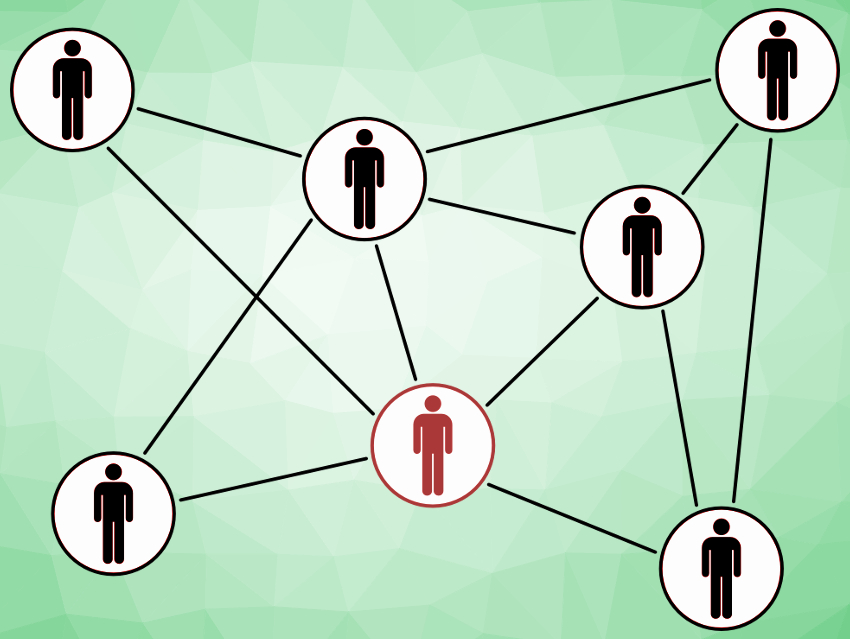The coronavirus SARS-CoV-2 causes the current outbreak of the respiratory disease COVID-19. The virus was first detected in Wuhan, China, at the end of 2019 and has spread globally by now. Understanding infection pathways is important to curb the continuing spread of the virus. In particular, it has been hypothesized that unrecognized infections could play an important role in the growing number of cases. When an infection with mild or even no symptoms goes undocumented, the patient can continue to move freely and expose others to the virus.
Sen Pei, Jeffrey Shaman, Columbia University, NY, USA, and colleagues have developed a mathematical model that simulates the development of infections, based on reported cases within China during the weeks around the shutdown of travel to and from Wuhan. The team used location data collected by a Chinese technology company to estimate the daily numbers of travelers between 375 Chinese cities. In their model, they separated cases into documented and undocumented infections, with different transmission rates for these two groups. The researchers then adjusted their model to match the number of observed, documented cases.
The team was able to simulate different scenarios using this model. They estimate that 86 % of all infections were undocumented during the period before travel restrictions were imposed on January 23, 2020. When the transmission from undocumented infection was artificially set zero, known infections were reduced by 78.8 % across China in the simulation. This means undocumented infections could have been the source of over three-fourths of the known cases. According to the researchers, these unknown, likely mild cases seem to have facilitated the rapid spread of the virus throughout China before major control measures were implemented. This implies that a significantly improved identification of currently unknown infections might be needed to fully control the outbreak of COVID-19.
- Substantial undocumented infection facilitates the rapid dissemination of novel coronavirus (SARS-CoV2),
Ruiyun Li, Sen Pei, Bin Chen, Yimeng Song, Tao Zhang, Wan Yang, Jeffrey Shaman,
Science 2020.
https://doi.org/10.1126/science.abb3221
Also of Interest
- Engineered Cell Line for Coronavirus Isolation,
ChemistryViews.org 2020.
Modified cell line is highly susceptible to SARS-CoV-2 infection, which makes it useful for studying the virus - How Long Can the SARS-Cov-2 Virus Live on Surfaces and in Aerosols?,
ChemistryViews.org 2020.
New results on the stability of the virus causing COVID-19 - Structure of Coronavirus Receptor on Human Cells Determined,
ChemistryViews.org 2020.
Cryo-EM structures of full-length human angiotensin-converting enzyme 2 (ACE2) - α-Ketoamides Keep Different Viruses from Multiplying,
ChemistryViews.org 2020.
New broad-spectrum antivirals against coronaviruses and enteroviruses - Clever Picture: Coronavirus Entering and Replicating in a Host Cell,
Vera Koester,
ChemViews Mag. 2020.
https://doi.org/10.1002/chemv.202000018
Where the coronavirus comes from and how it infects the human body - Structure of “Spike” Protein in New Coronavirus Determined,
ChemistryViews.org 2020.
Results could help to develop a vaccine and antibody treatments - Antiviral Drug Shows Promise Against MERS Coronavirus,
ChemistryViews.org 2020.
The broad-acting drug remdesivir could also be useful against the current coronavirus disease (COVID-19) - How Long Can Coronaviruses Live on Surfaces?,
ChemistryViews.org 2020.
Literature review finds coronaviruses could persist on hard surfaces for up to nine days, but can be killed with the right disinfectant - Suggesting Potential Drug Candidates for Coronavirus,
ChemViews Mag. 2020.
Summarizing the current research and suggesting potential drug candidates for treating patients suffering from the 2019-nCoV acute respiratory disease
- LitCovid
Curated literature hub for tracking up-to-date scientific information about COVID-19 - Many publishers and other entities have signed a joint statement to ensure that COVID-19 research findings and data are shared rapidly and openly




